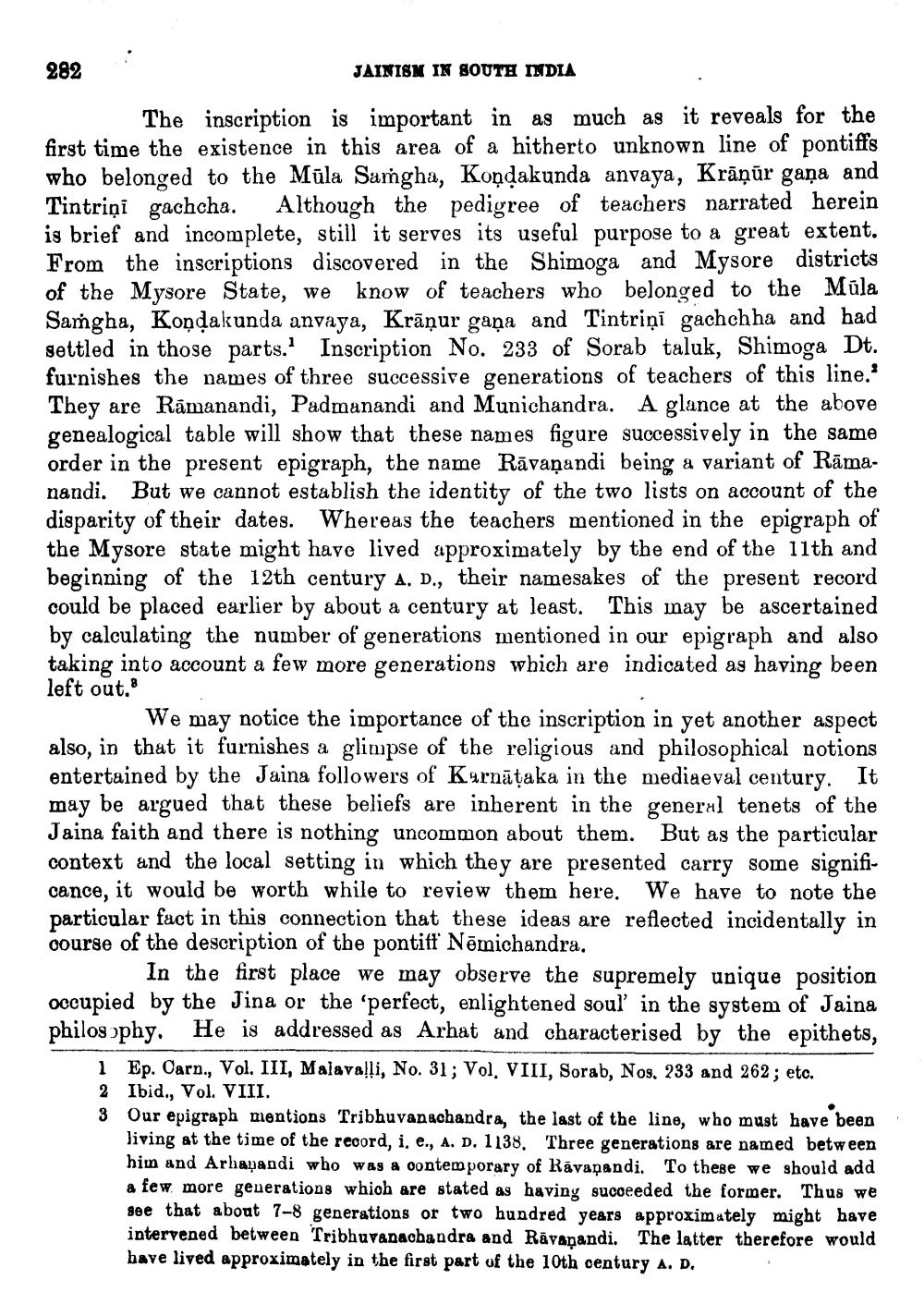________________
282
i
JAINISM IN SOUTH INDIA
The inscription is important in as much as it reveals for the first time the existence in this area of a hitherto unknown line of pontiffs who belonged to the Mūla Saṁgha, Kondakunda anvaya, Krāņūr gana and Tintriņi gachcha. Although the pedigree of teachers narrated herein is brief and incomplete, still it serves its useful purpose to a great extent. From the inscriptions discovered in the Shimoga and Mysore districts of the Mysore State, we know of teachers who belonged to the Múla Samgha, Kondakunda anvaya, Krāņur gana and Tintriņi gachchha and had settled in those parts. Inscription No. 233 of Sorab taluk, Shimoga Dt.
ishes the names of three successive generations of teachers of this line.' They are Rāmanandi, Padmanandi and Munichandra. A glance at the above genealogical table will show that these names figure successively in the same order in the present epigraph, the name Rāvanandi being a variant of Rāmanandi. But we cannot establish the identity of the two lists on account of the disparity of their dates. Whereas the teachers mentioned in the epigraph of the Mysore state might have lived approximately by the end of the 11th and beginning of the 12th century A. D., their namesakes of the present record could be placed earlier by about a century at least. This may be ascertained by calculating the number of generations mentioned in our epigraph and also taking into account a few more generations which are indicated as having been left out.
We may notice the importance of the inscription in yet another aspect also, in that it furnishes a glimpse of the religious and philosophical notions entertained by the Jaina followers of Karnāțaka in the mediaeval century. It may be argued that these beliefs are inherent in the general tenets of the Jaina faith and there is nothing uncommon about them. But as the particular context and the local setting in which they are presented carry some significance, it would be worth while to review them here. We have to note the particular fact in this connection that these ideas are reflected incidentally in oourse of the description of the pontiff Nēmichandra.
In the first place we may observe the supremely unique position occupied by the Jina or the 'perfect, enlightened soul in the system of Jaina philosophy. He is addressed as Arhat and characterised by the epithets,
1 Ep. Carn., Vol. III, Malavalli, No. 31; Vol. VIII, Sorab, Nos, 233 and 262; etc. 2 Ibid., Vol. VIII. 3 Our epigraph mentions Tribhuvanachandra, the last of the line, who must have been
living at the time of the record, i, e., A. D. 1138. Three generations are named between him and Arhapandi who was a contemporary of Rāvanandi. To these we should add a few more geuerations which are stated as having succeeded the former. Thus we see that about 7-8 generations or two hundred years approximately might have intervened between Tribhuvanachandra and Rävanandi. The latter therefore would have lived approximately in the first part of the 10th century A. D.




